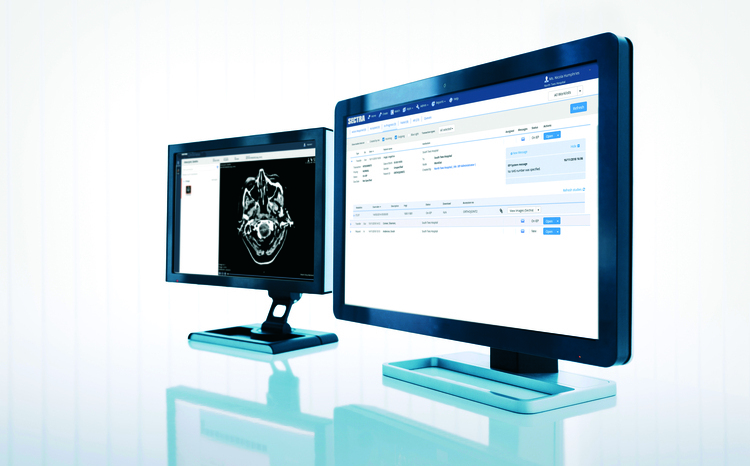CMO flags up issues with computerised radiotherapy
- 17 July 2007
Unsafe transfer of data and a lack of training in new computerised radiotherapy systems have been highlighted as potential hidden dangers by the chief medical officer (CMO), Sir Liam Donaldson.
The issue is one of many featured in the CMO’s annual report ‘06 which also looks at hospital-based infections, organ transplants, intrapartum-related deaths and women in medicine.
Sir Liam’s report shows that trusts are experiencing errors using the systems to plan treatment, and transfer the information over to radiation delivery devices.
He warns: “Errors in the administration of radiotherapy continue to occur and lead to harm or death to patients; although small in proportion to the four million doses of radiation for cancer treatment each year, they are preventable.”
In the past, in order to administer radiotherapy, manual calculations had to be carried out to ensure the accuracy of treatment. Doctors and radiographers would sit with paper, pens and calculators and work out the right doses and areas to be treated. This was a complex process involving delicate manual adjustments.
Radiotherapy is now calculated using ‘increasingly complicated’ computer operating systems and software. These allow treatment plans to be developed, tumour localisations to be precise and doses to be administered in a very exact way.
Calculations can be performed by sophisticated software packages. Three-dimensional imaging allows accuracy in the precise placement of the radiation field.
However, the report highlights that trusts have not fully understood how the new computer system works and so have been making potentially lethal errors.
In Staffordshire, 1,000 cancer patients received the wrong dose of radiation due to a misunderstanding arising from the computer system informing staff that an automatic adjustment to radiation dosage would not be made, when in fact it was. As a result an additional and unneccessary manual adjustment was made leading to "systematic under-dosage of radiation in all cancer patients recieving treatment from the machine. The error went undiscovered for 10 years.
The report says: “A new computer for providing radiotherapy treatments was installed in the department concerned. Staff delivering the treatment were informed that the computer did not make a necessary adjustment to the radiation dosage. This information was incorrect. As a result, an additional and unnecessary manual adjustment was made, leading to a systematic under-dosage of radiation in all cancer patients receiving treatment from this machine.”
Sir Liam reports that trusts are hindered by the lack of an agreed process to pick up an error once it has occurred: “In all the featured cases, once the error process was initiated it was unstoppable. In one case it continued for 10 years. A lack of clear lines of accountability was partly responsible. Most worrying has been the dangerous repetition of errors once they occur and the failure to pick them up. Often, the errors are discovered by chance and not because a failsafe was present in the system to alert staff to the danger.”
The report adds another cause of these errors is a lack of training in the new technology.
Sir Liam writes: “Central to many accidents in radiotherapy delivery is lack of training of healthcare professionals. New computer systems in radiotherapy are increasingly complex and diverse in their range of functions. New machines also bring new features, which staff may be unfamiliar with.”
He warns: “Human error is inevitable, but harm to patients is not. Organisations need to pay heed to previous errors and develop systems that prevent error and pick it up early. Standard operating procedures should be reinforced to safeguard situations involving data transfers, which have a bearing on the accuracy of a patient’s radiotherapy treatment.”
The report suggests action should include a change of culture so all incidents are reported straight away and are dealt with immediately.
It suggests: “Many problems of this type would be solved by the use of in-vivo dosimetry. This means that after the first dose of radiation is delivered to the patient, it can be measured to ensure it is correct. If it is different from the prescribed dose, the treatment plan is rechecked and reconfigured so that subsequent doses take account of the first error.
“This procedure is not commonly done in this country at the present time. Another approach is the use of a simulated first dose. This does not involve the patient, but involves a dummy run with real radiation. The dose is still measured after the first dose to ensure accuracy and this avoids the patient being exposed to a first-time error.”
Training should also be looked at, to ensure staff are aware of the need to check, especially as systems are often upgraded for improved functionality and there is no standard system for radiotherapists across the country.
“Training programmes need to be widely available at a hospital level and continued throughout the duration of employment. Initial induction and supervision is particularly important. Where training is available, hospitals need to have a mechanism for establishing that operators have been trained and that training is valid. There is no doubt that rapid changes in technology make this an urgent need,” it says.
The report also calls for revisions to the organ donor system whereby patients ‘opt-out’ and consent is presumed. It is hoped that this change will combat the current lack of available organs for transplantation.
Patients are to be given alcohol-based handrubs to ensure that healthcare professionals clean their hands prior to treatment
Sir Liam also plans to introduce flexible working patterns to ensure that women in medicine are not presented with barriers to their career progression.
More information will also be made available to address gaps in knowledge about the cause of intrapartum-related deaths. Approximately 500 babies a year start labour apparently healthy and then die (intrapartum-related deaths), a figure that has remained unchanged since 2000.
Sir Liam comments: “It is highly unsatisfactory that the current national survey of maternal and child health reviews maternal, but not infant, deaths (in contrast to the survey’s counterpart 10 years ago).This detailed information is necessary to continue to highlight avoidable factors and the scope for action to reduce risk. Also, research is needed to identify the cause of death amongst the intrapartum group of babies whose deaths remain unexplained, especially as many could have been avoidable.”
He apologised to junior doctors for the recent MTAS affair, describing it as ‘a crisis in medical workforce planning’, and added: “It is important that all the lessons are learned from this experience so that, from 2008 onwards, the programme design and its delivery are fit for purpose. In this respect, the review to be led by Sir John Tooke is very welcome.”
Links
Annual Report for 2006, On the State of Public Health




